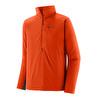Vivian Quarry, slate climbing in North Wales

 1 / 3
1 / 3 Alex Messenger
Alex Messenger
For many climbers Vivian Quarry acts as the gateway to the Llanberis slate quarries. This is due in part to it's ease of access - clearly visible from Llanberis and literally a stone's throw from the car park - but above all to its astounding selection of class routes of all grades and genres.
The routes are situated above the crystal clear lake on a series of different levels, the most famous of which is undoubtedly The Dervish Slab, named after one of the most sought-after routes in the country, Stevie Haston's Comes the Dervish E3 5c. At the time of the first ascent, 1981, the route was famously cleaned with a knife and fork "borrowed" from nearby local cafe Pete's Eats and despite losing some of it's edge - the crack used to be a lot thinner and was originally E5 - Comes the Dervish has lost none of its appeal and is widely regarded as the trigger which set off the slate boom in the 1980's.
Immediately to the left and right of this timeless classic lie some other magnificent outings, albeit of a far more serious nature, such as the aptly named For Whom the Bell Tolls E6 6b and the technical and run-out connection Flashdance/Belldance E5 6b. The face to the left of the Dervish couldn't contrast greater and the steep wall hosts some hard but well-protected sport routes such as Gin Palace 7c and John Redhead's powerful and reachy Manic Strain 8a.
The Waterfront level offers a multitude of easier routes including the highly popular Psychotherapy E2 5c, while nearby Dawes of Perception E7 6c remains one of the most dangerous routes on slate. No wonder it has received only a handful of repeats since Johnny Dawes carried out the first ascent in... 1985.
Llanberis Slate
At its peak during the second half of the 19th century, the slate mining industry dominated the economy in North Wales, employing almost 17000 men at quarries dotted around the country including the immense sites at Blaenau Ffestiniog, Bethesda and Llanberis. Entire hillsides were transformed irreversibly as Welsh slate was exported worldwide, but with the advent of cheap roofing tiles the industry showed the first signs of decline at the turn of the century, and then collapsed after the Second World War.
The Dinorwic quarry above Llanberis was the second largest mine in North Wales and when it closed definitively in 1969 it left behind a wasteland of vast proportions. The entire area was abandoned for years and it wasn't until the early 1980's that climbers ventured into the complex system of mines to explore this vertical Eden, discovering fantastic crags such as Vivian Quarry, the Seamstress slab, Bus Stop Quarry and of course Rainbow Slab.
| CLIMBING AT VIVIAN QUARRY, LLANBERIS, WALES | |
| Links Planetmountain | |
| Vivian Quarry | |
| Rainbow Slab | |
| Crags database | |
| Links www | |
| www.alexmessenger.co.uk | |



 Copia link
Copia link
























